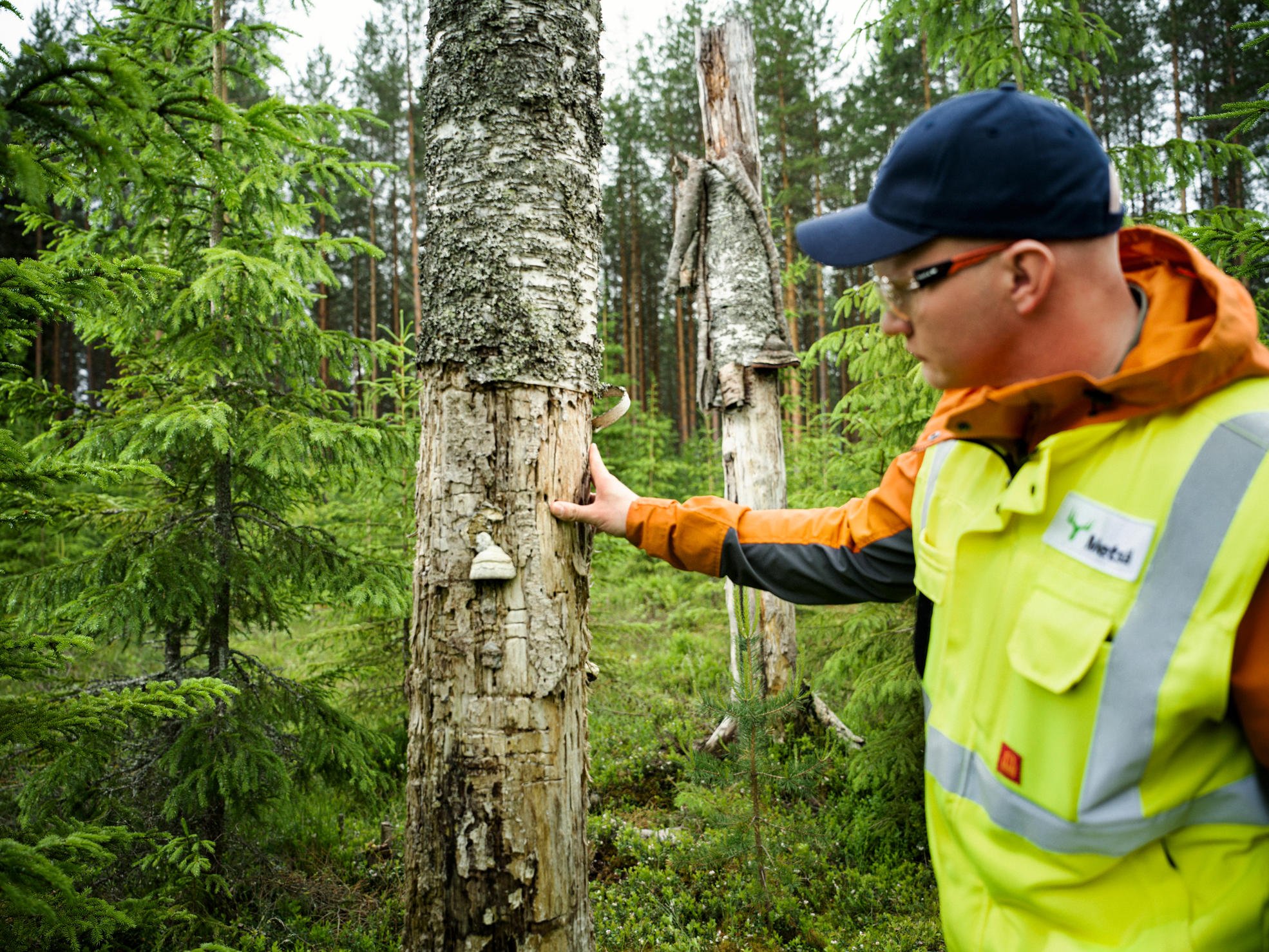Decaying wood emerges in forests naturally when trees die as a result of damage, as well as from retention trees left on felling sites. The lack of decaying wood continues to be the most common single cause for the endangerment of forest species.
By making high biodiversity stumps, we can increase the amount of standing decaying wood, which is important to many forest species. It is particularly important to increase the amount of decaying wood in young and mature growth forests where decaying wood is scarce. Various decaying fungi, insects, beetles and forest-dwelling birds benefit from high biodiversity stumps, which offer them living spaces and nutrition.
A study carried out in 2021 found that significantly more species inhabit high biodiversity stumps than regular logging stumps. In addition, all the discriminating species found in the study inhabited biodiversity stumps.
Four high biodiversity stumps per hectare also in future
In Metsä Group’s felling operations in Finland, high biodiversity stumps have been systematically made since 2016. Four high biodiversity stumps are made per hectare to ensure the variety of decaying wood in the forest. In the Metsä Group Plus management model, a full ten high biodiversity stumps are made per hectare.
In February 2023, high biodiversity stumps were also included in the criteria of PEFC certification, which requires that both live and dead retention trees are left during felling. If the felling site does not have enough dead wood, high biodiversity stumps are made to increase the amount of decaying wood.
Broadleaved trees make the best stumps
Broadleaved trees are favoured when selecting candidates for high biodiversity stumps. For example, downy birch of poor quality, as well as curved or damaged broadleaved trees also provide good material for high biodiversity stumps. If a felling site only has individual broadleaved trees here and there, they are better left as retention trees than made into high biodiversity stumps.
Good places for high biodiversity stumps include protective thickets and retention trees. In regeneration felling, high biodiversity stumps should be made both at the centre and on the sides of the felling site. This provides suitable habitats for species favouring open and warm spots as well as shadier places.
Metsä Group concludes thousands of wood trades every year. The biodiversity actions of individual forest owners multiply, and every day of the year, we make hundreds of trees that will provide a future home to hole nesters.
